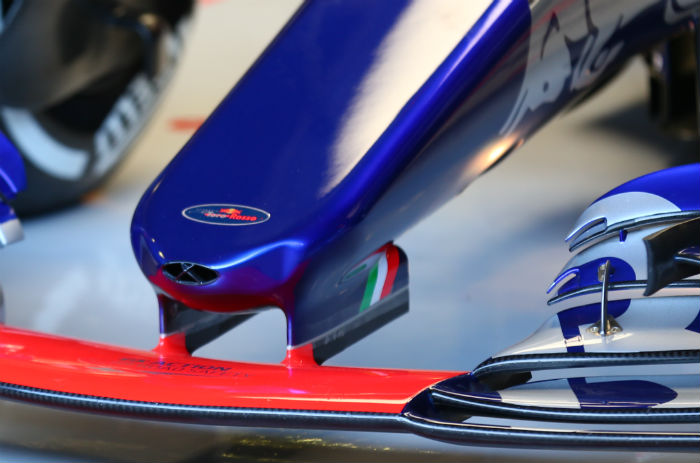The Toro Rosso STR12 took to the track for the first time at a foggy Misano circuit in Italy a few days before the start of pre-season testing. Fitted with the latest generation of the Renault power unit the car is thought to be the most advanced Toro Rosso yet.
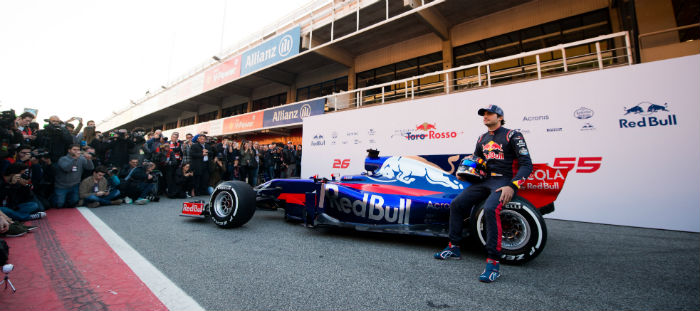
“The front half (of the car) is completely new, with a swept front wing and a lot more freedom around the front of the floor, which means you can generate more downforce. There is also more freedom at the rear: you have a wider floor, a higher diffuser, the diffuser starts earlier and the rear wing is wider and lower. The philosophy for some of the car is something that we can take across from last year, but other areas require a complete re-think. The front wing position and shape has changed as well as all of the front floor. There is a lot more opportunity to explore different ideas and explore concepts that you hadn’t been allowed in the past” Head of Aerodynamics Brendan Gilhome explains.

The STR12 has a wider front wing than the STR11, as per the 2017 regulations, however Toro Rosso has adopted a new narrower nose compared to the 2016 car (below)

As with the STR11 the STR12 uses a ducted nose, with two small NACA style ducts under the nose feeding the main exit duct on the top of the nose.
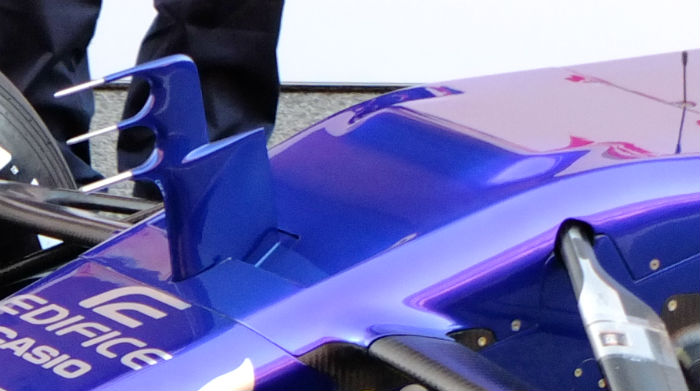
The main exit duct sits just ahead of the front bulkhead, note the bump in the bodywork between the pushrods, these shroud the third element in the front suspension.
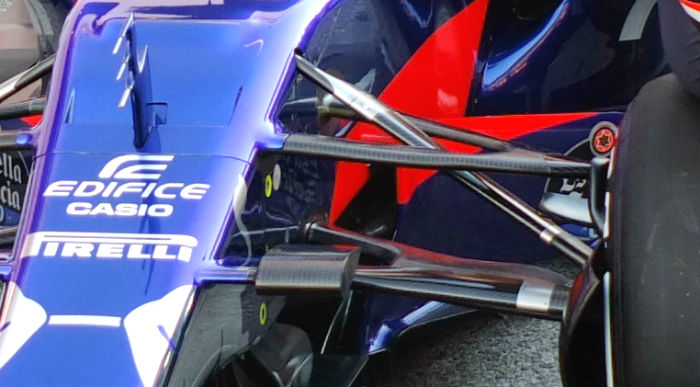
The front suspension has, as is standard, a pushrod layout. Note the blended lower wishbone and the TV camera stalk mounts.
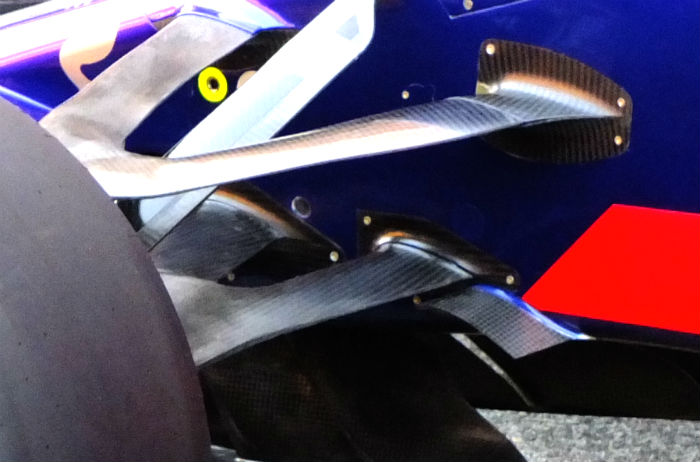
Looking at the front suspension arms from the rear a small flow conditioner behind the lower rear wishbone can be seen, part of an area of the car which is of particular focus for all teams in 2017.

Comparing the 2016 suspension from a similar angle (above) it is clear to see how much more substantial the 2017 design of lower wishbone is.
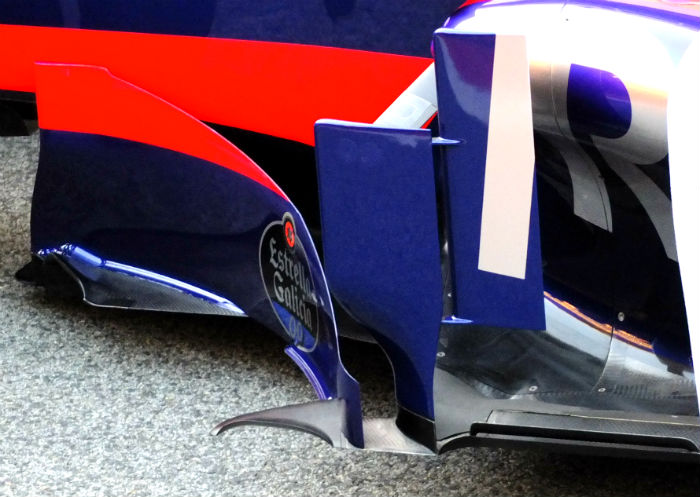
The new technical regulations allow a lot of freedom in the barge board area. Toro Rosso’s design is relatively conventional at least in launch specification with a fairly traditional barge board and a pair of vertical elements.
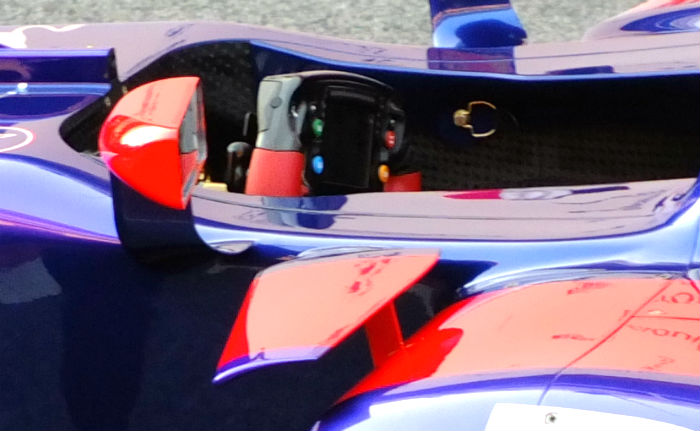
On the top of the leading edge of the sidepods there are small aerodynamic elements, which unusually are not linked to the outer vertical elements.
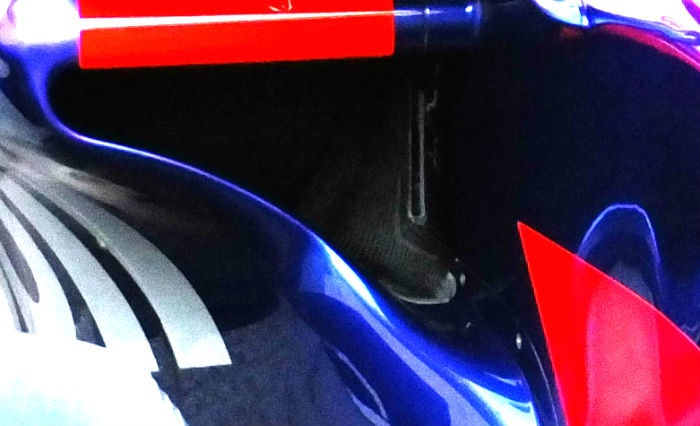
The sidepod duct shape itself is similar to 2016, however it does have some interesting features, note the small slot on its inner face.

The lower leading edge of the sidepod duct is rather bulbous and protrudes forwards a fair way. This is almost certainly for aerodynamic reasons rather than packaging. Note also that the sidepod mounted aerodynamic element is mounted to the outer edge of the side impact structure.
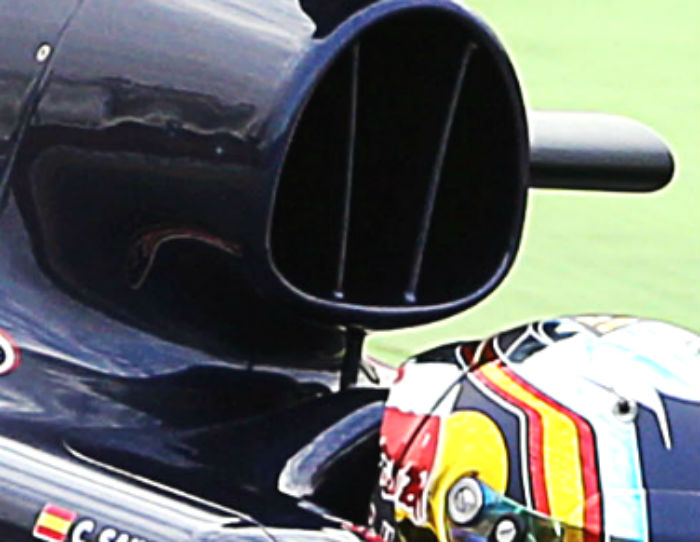
The roll hoop concept and layout on the STR12 (below) has carried over from the STR11 (above). It continues with the centreline cooling concept the team has used for a number of seasons.
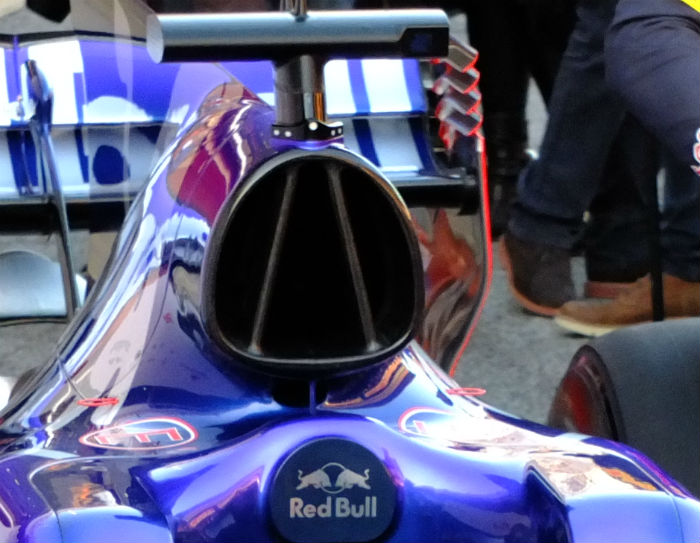
Looking to the rear of the STR12 the rear suspension layout its apparent, as expected a pushrod layout. Toro Rosso has once again developed its own transmission casing giving it complete freedom in terms of rear suspension geometry (below)
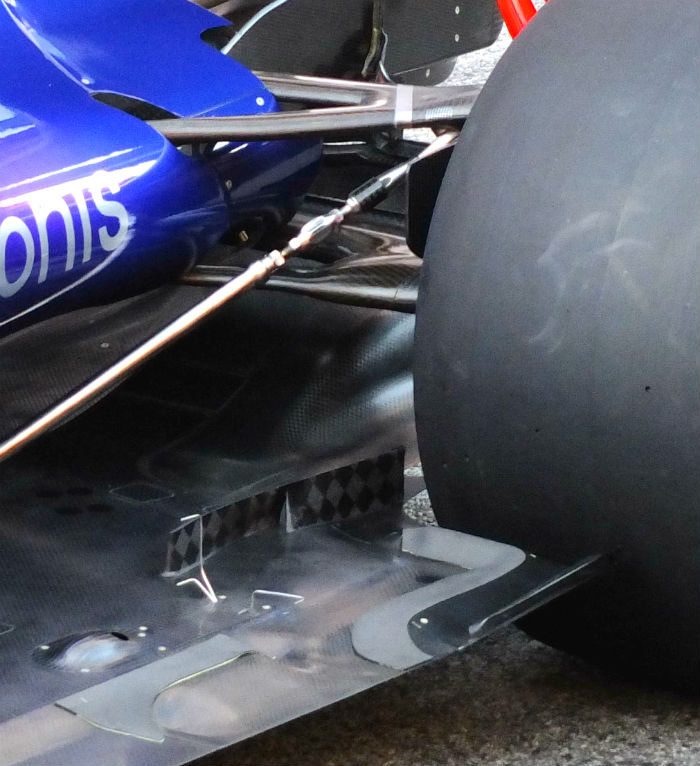
At the roll out of the STR12 the car was fitted with some small air speed sensors on the rear floor, suggesting that this is a major area of interest for the team and likely to see significant development early in the season.
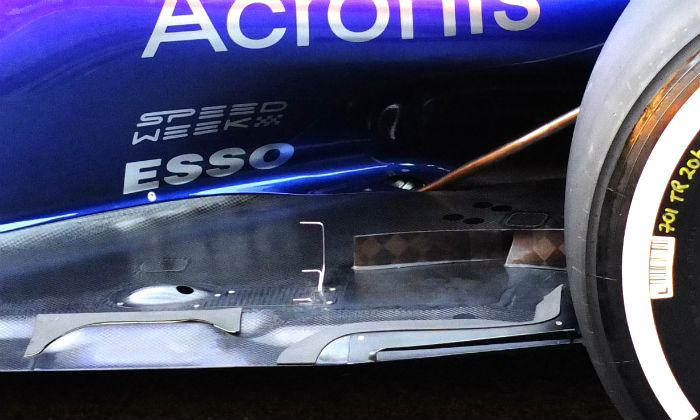
From the rear of the car more detail of the STR12’s aerodynamic design became apparent at its launch.
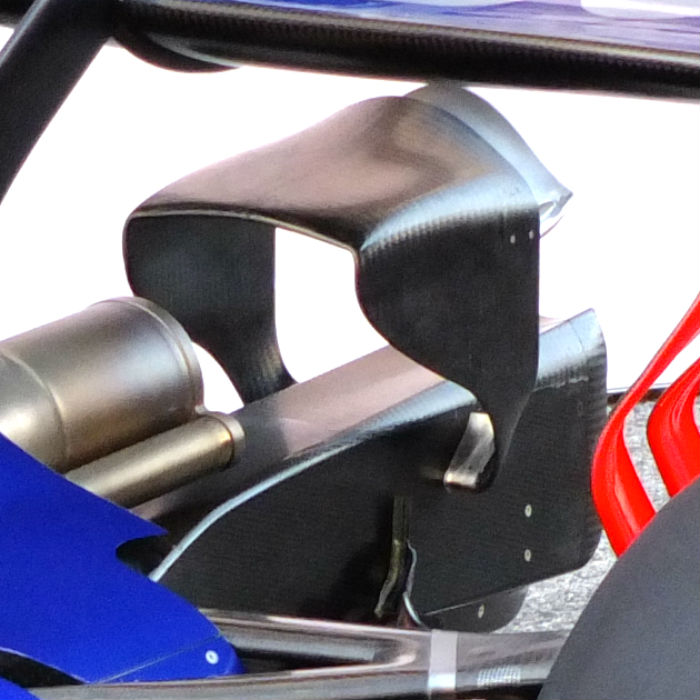
A small but complex winglet is mounted on top of the rear crash structure. As fitted for the pre launch photo shoot the winglet featured no thermal barrier which is perhaps surprising considering its location in the exhaust plume.
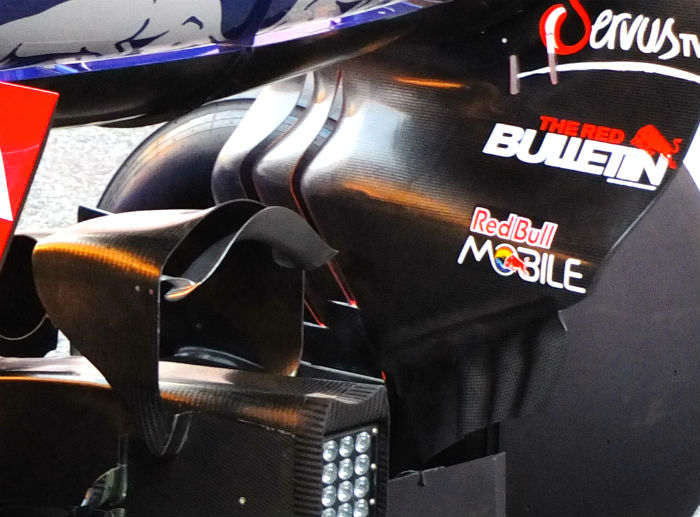
Looking from the rear the second lower element is visible and this does have a thermal barrier coating on the underside. Note also the slits in the leading edge of the rear wing end plate.
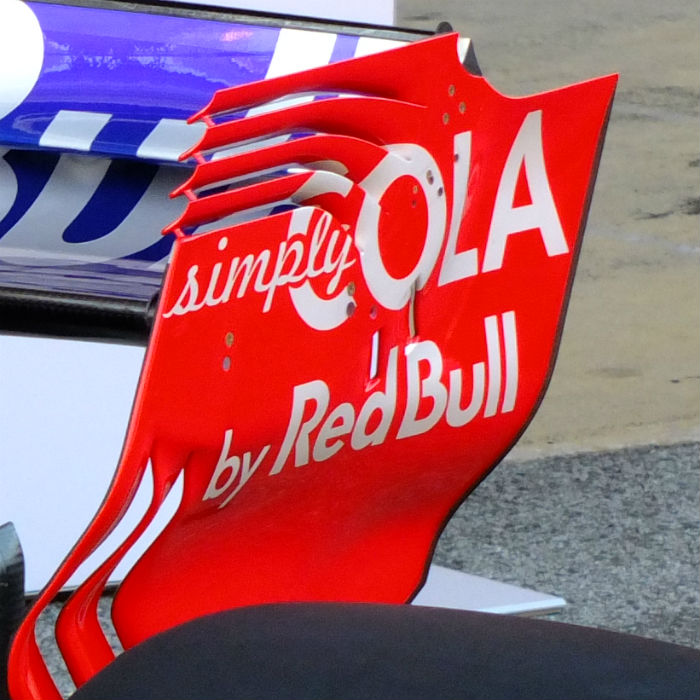
Looking at the outer face of the rear wing end plate the slits in the leading edge are clear to see, as are the (almost) open fronted vents on the upper leading edge (something pioneered by Toro Rosso). Not the small gurney on the trailing edge of the upper element of the rear wing.

Looking from the rear the twin wastegate exits and tailpipe can be seen. The main wing support passes through the pipe again a solution pioneered by Toro Rosso and adopted by a number of other teams later.
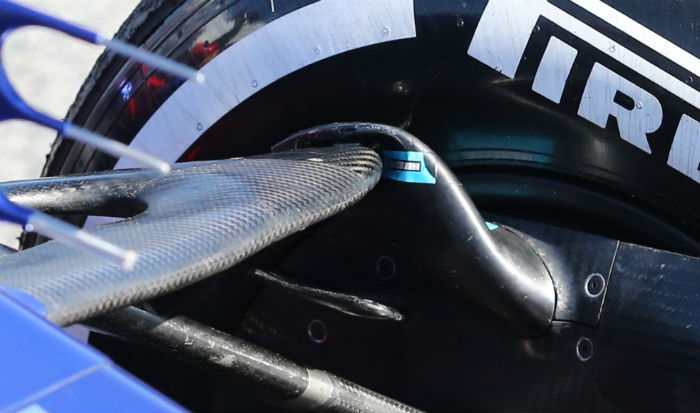
A look at the upper wishbone mounting on the Toro Rosso, the wishbone actually ends slightly short of the upright and an extension extends outward and rearward to meet it. This is thought to be done for aerodynamic reasons.

During the first test at Barcelona this spot of light was seen under the car, it is the tell tale sign of a yaw sensor being used.
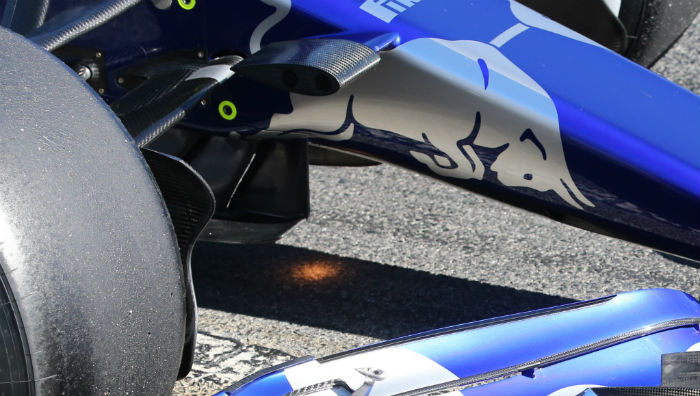
A good look at the diffuser of the STR12 which features fewer strakes than some of the other cars running at Barcelona (below)
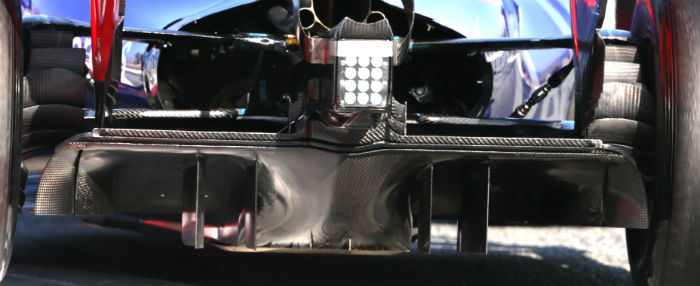
The engine cover fin on the Toro Rosso neatly links to the rear wing support via a small metal component.
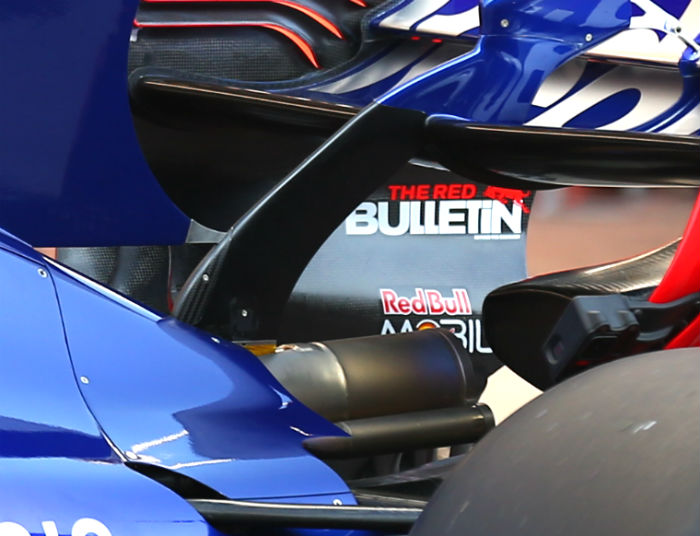
The STR12 was fitted with a new nose design for the second pre-season test at Barcelona. The difference between new and old is very subtle, with just a small reshape of the nose tip itself.
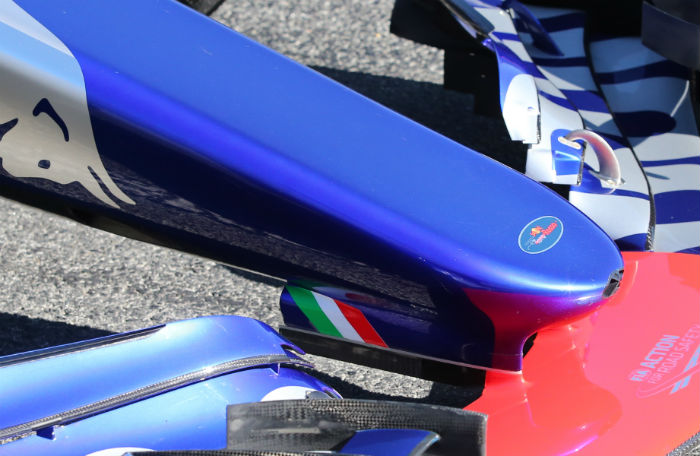
It is unclear if this new design would have required a new crash test. Compare the old nose (above) with the new (below).
